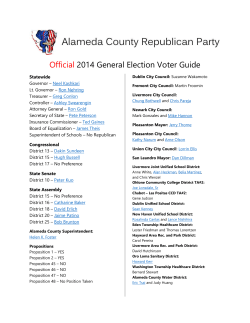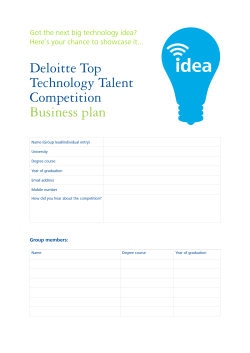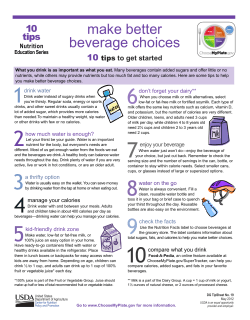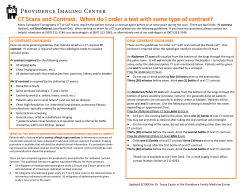
Having effective points Coming up with arguments Ineffective Arguments
Coming up with arguments Having effective points Consider All Factors Major Factors Cost Jobs Big or Small? Create or Reduce? Ineffective Arguments Education Environment Help or Hurt? Help or Hurt? Often our arguments are ineffective because: • We have too few arguments • We are narrow minded about what we are arguing about Health Technology Help or Advance or go • We fail to be clear about the principles at stake. Morals All of these things we can teach our students to do. Here are a number of strategies: Clear or Murky? Justice Fair or Unfair? Tradition Respect or disrespect? Consider All Factors (CAF) The CAF strategy works most effectively for developing arguments for proposition style debates. In any debate, including proposition debates, we will often think about one or two factors when we argue, but there can often be many more factors that are relevant to an argument. On the next page (and attached as a Handout) you will find a CAF chart. When students are initially How is this being done? Process Good or Bad? Agenda Clear or Secret? 12 brainstorming arguments, get them to identify all the factors Factors Plus Minus Interesting In terms of the proposition’s impact on this factor, would would be a negative? What is a possibility that could be either positive or negative? What question is there about the impact of this proposition on this factor? from this page that are relevant to this issue. It’s important that when students are identifying factors that are relevant to the issue, they not narrow their thinking by considering whether they are for or against a topic. We want students to initially think as broadly as possible about a topic, before they decide where the strongest case lay. List factor here Once students have identified the factors they believe are relevant, this can be shared and discussed as a class. In terms of the proposition’s impact on this factor, would would be a plus? List factor here Afterwards, students can then identify which are the five most important factors and which factor is likely to be most important to the target audience of the debate. CAF + Plus, Minus, Interesting (PMI) Plus, Minus, Interesting is a thinking tool that can be used to consider the advantages, detractions and questions that arise from a proposed action or topic. It’s an effective tool for students to think critically about the impact of a proposition in terms of a range of factors. List factor here For example, if we were arguing that soft drink should be outlawed, a PMI chart might look like the one on the next page. Students might not be able to fill out all boxes in the grid, but we should challenge them to fill in at least two boxes in each row. Once students have completed their PMI, they can then assess which is the strongest side to the argument. Once students have identified factors and narrowed these down to the most important five using the CAF activity listed above, they can then put these factors into a PMI chart such as the one on the next page. 13 Factors Plus Minus Interesting Health Soft drink has known links to obesity - getting rid of it would help Shouldn’t people be able to have soft drink as part of a balanced diet? Would people just drink or eat something else unhealthy? Jobs There would need to be people to regulate soft drink bans Lots of people would lose jobs at soft drink companies Would the money we save on health out way the money we lose in jobs? Environment Less soft drink bottles and cans The bigger principle The CAF activity above is very much about helping students develop a ‘nuts and bolts’ thinking strategy to support them to identify the best arguments possible for a case. The ‘bigger principle’ is a more advanced strategy. Unlike the CAF activity, the bigger principle is about students identifying the most important principle at stake in the issue and developing arguments that support a case in terms of this one principle. The idea is, that using this method we can develop a more sophisticated argument and win our case by claiming the highest 14 From here we consider these questions: • How would the proposition under consideration help achieve this ideal world or harm this ideal world? For example, in the issue about banning soft drinks we might contend that: this essentially is a public health issue. In an ideal world, we want people to have every opportunity to be their best, fittest selves. The sale of soft drink prevents this. This strategy requires a higher level of understanding and thinking than the CAF activity - so it won’t be for all students all of the time. To use this strategy with students, give them the Bigger Principle Handout and ask them to identify which is the bigger issue underlying the proposition. Public Health Democracy, Free Speech & Human Rights Is this an issue to do with what is in the best Is this an issue to do with our freedom to make interests of keeping us all healthy and safe from decisions and to decide who governs us? Is this physical dangers? an issue to do with our democratic rights and our rights as individuals? Government/Political Privacy Is this an issue about what governments should Is this an issue to do with the rights of people to be doing to best help their people? control information about themselves? Education Is this an issue to do with how well we are educating the people in our society or what opportunity they have to access quality education? Cultural Is this an issue to do with the traditions, institutions, and ways of behaving of groups, communities or nations? Environmental/Animal Rights Is this an issue about how best and most sustainably we can use our resources? Economic & Productivity Religious Is this an issue about money or employment and Is this an issue to do with people’s spiritual or the opportunities individuals and families have religious beliefs? to financially look after themselves? Is it about how efficiently we are using our resources? Justice, Fairness & Equality Moral & Ethical Is this an issue about people being treated fairly Is this an issue about accepted codes of conduct according to the law or according to what most in certain situations? people would perceive as fair? Is it about people being treated the same? We identify the principles at stake in an issue by locating what the bigger issue at play is. The bigger issue might be economic, social, moral or educational (see list on the page to the right and also attached as a Handout). Social / Welfare Is this an issue about how we behave and relate to each other as individuals and groups? Is it about how well we look after each other in our society? • What would most people agree to be an ideal world in terms of this bigger issue? The Bigger Picture / Principle moral ground. Ask students to then consider the two dot points at the top of this page page. 15
© Copyright 2025





















